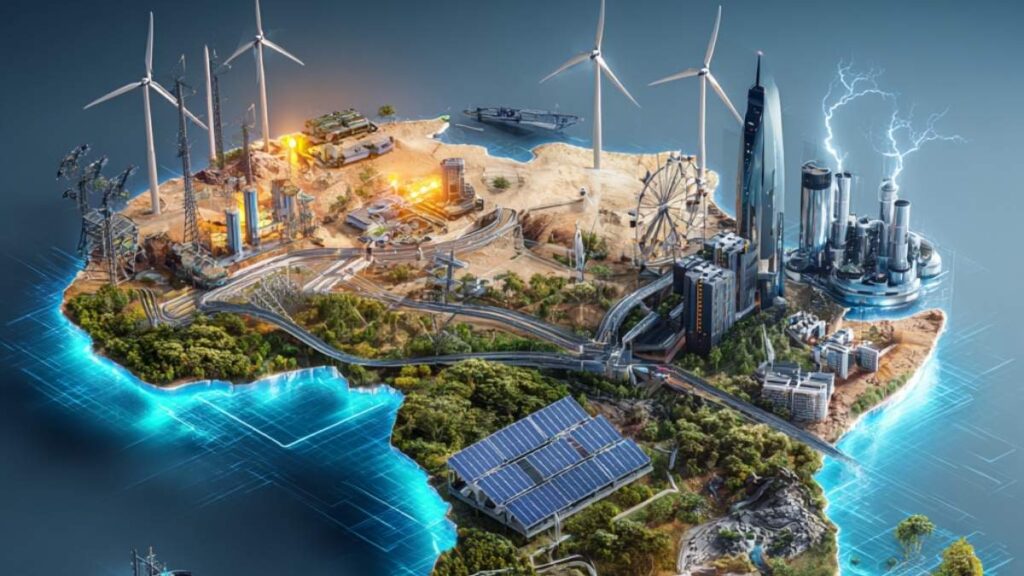In the intricate dance of global economics, energy has always played a pivotal role. For emerging nations, however, it’s not merely a commodity; it’s increasingly becoming the very bedrock upon which sustainable economic growth and national prosperity are built. The argument for energy to drive economic policy in these countries is compelling: reliable, affordable, and sustainable energy access can unlock industrialization, improve public health, and foster innovation. Yet, this path is not without its complexities and potential pitfalls.
The Case for Energy-Centric Policy
At its core, an energy-driven economic policy prioritizes the development and strategic management of a nation’s energy resources to achieve broader economic objectives. For emerging economies, this often translates into a focus on expanding electricity access, reducing reliance on volatile fossil fuel imports, and leveraging domestic energy sources, particularly renewables. The benefits are manifold:
- Economic Growth and Industrialization: A stable and affordable energy supply is fundamental for industrial development. Factories need power, businesses need light, and homes need heating and cooling. By ensuring robust energy infrastructure, emerging nations can attract investment, foster manufacturing, and create jobs. The International Energy Agency (IEA) forecasts that power consumption in India, Africa, the Middle East, and Southeast Asia will more than double by 2050, underscoring the urgency of this need.
- Energy Security and Price Stability: Many emerging nations are vulnerable to global energy price fluctuations that can cripple their economies. Investing in diverse, domestic energy sources, especially renewables like solar and wind, reduces this dependency, leading to greater energy security and more predictable energy costs for businesses and consumers.
- Environmental and Health Benefits: A transition toward cleaner energy sources, often a cornerstone of such policies, directly addresses climate change and significantly improves public health by reducing air pollution. In turn, this can lower healthcare costs and enhance overall quality of life.
- Job Creation and Innovation: The development of new energy infrastructure, particularly in renewable sectors, creates a demand for skilled labor in manufacturing, installation, and maintenance. This fosters new industries and can spur technological innovation within the country.
Pros and Cons of an Energy-Driven Approach
While the advantages are significant, an energy-centric economic policy also presents challenges:
Pros:
- Catalyst for Development: Energy access is a prerequisite for almost all other forms of development, from education to healthcare and communication.
- Attraction of Foreign Investment: Clear, supportive energy policies, especially those promoting green energy, can attract significant foreign direct investment (FDI).
- Long-Term Sustainability: Investing in renewable energy sets a country on a path towards a more environmentally sustainable and resilient future.
Cons:
- High Upfront Costs: The initial investment required for large-scale energy infrastructure, particularly renewables and grid upgrades, can be substantial for nations with limited financial resources.
- Grid Integration Challenges: Intermittent renewable sources like solar and wind require robust grid infrastructure and energy storage solutions, which can be complex and expensive to implement.
- Policy and Governance Risks: Poorly targeted subsidies, weak governance, and inadequate planning can paralyze energy transitions and prevent the desired economic benefits from materializing.
- Social Equity Concerns: Ensuring that energy access and its benefits are distributed equitably across all segments of society, especially in remote or impoverished areas, remains a significant challenge.
Countries Leading the Way and Best Practices
Several emerging nations are making strides in leveraging energy for economic development:
- Kenya: Kenya’s Feed-in Tariff (FIT) policy has been instrumental in driving investment in renewable energy, particularly in the wind and solar sectors. Their focus on energy efficiency, championed by initiatives like the Jikokoa charcoal cookstove, also demonstrates a commitment to sustainable energy use.
- Vietnam: Vietnam has successfully incentivized solar energy adoption, largely through feed-in tariffs, leveraging the global trend of falling costs for solar and wind technologies. They have also been open to private and foreign capital in their energy sector.
- Ethiopia: Ethiopia’s Climate-Resilient Green Economy (CRGE) strategy explicitly frames its economic development as low-carbon, with a strong focus on hydropower. They’ve also implemented digital platforms for monitoring water usage and infrastructure performance.
- China: China’s infrastructure ambitions, including a projected $12 trillion investment in power generation, are reshaping the global landscape. Their massive investment in renewable energy infrastructure is leading to technological advancements and cost reductions, making clean energy more accessible for other emerging markets.
Best practices include:
- Clear and Stable Policy Frameworks: Establishing transparent and reliable regulatory frameworks, including financial incentives like feed-in tariffs or auctions, and setting clear renewable energy targets.
- Investment in Grid Infrastructure and Storage: Upgrading existing grids and incorporating energy storage solutions to accommodate intermittent renewables.
- Public-Private Partnerships: Fostering collaboration between governments and the private sector to fund and implement sustainable energy projects, often with de-risking mechanisms provided by multilateral development banks.
- Capacity Building and Technology Transfer: Investing in training programs for local technicians, engineers, and policymakers, and facilitating the transfer of clean energy technologies from developed nations.
- Integrating Energy into National Development Plans: Aligning energy policies with broader socioeconomic goals to maximize the benefits of clean energy efforts.
Key Vendors and Organizations
A variety of organizations and vendors play crucial roles in assisting emerging nations on this path:
- International Energy Agency (IEA): The IEA’s “Clean Energy Transitions in Emerging Economies” program (CETEE) provides collaborative analytical work, technical cooperation, training and strategic dialogues to accelerate clean energy transitions. Their “Energy Efficiency in Emerging Economies” program also offers capacity building, data-driven insights and policy recommendations.
- Multilateral Development Banks (MDBs): Organizations like the World Bank and the African Development Bank are pivotal in de-risking investments and mobilizing private capital for green energy projects through guarantees and funding.
- USAID (U.S. Agency for International Development): Historically, USAID has played a significant role in helping countries establish legal and regulatory frameworks for private sector energy investment, restructuring utilities, and scaling low-cost renewable energy through competitive auctions. While its energy programming has seen shifts, its blueprint remains influential.
- Specialized Consultancies and Technology Providers: Numerous private companies offer expertise in renewable energy project development, smart grid solutions, and energy efficiency technologies. While specific names vary by region and project, firms involved in solar panel manufacturing, wind turbine production, and battery storage solutions are critical partners.
Wrapping Up
The imperative for emerging nations to place energy at the forefront of their economic policy is clearer than ever. While the transition from traditional energy sources to a sustainable, diversified energy mix presents significant financial and infrastructural hurdles, the long-term benefits of economic growth, energy security, and environmental protection are undeniable. Countries like Kenya, Vietnam, and Ethiopia are demonstrating that with strategic planning, supportive policies, and international collaboration, it is possible to build resilient economies powered by clean energy. The journey requires foresight, investment, and a willingness to embrace new technologies, but for nations striving for prosperity in a rapidly changing world, energy is not just a utility; it is the ultimate engine of progress.
- Google’s Antitrust Defeat: How the U.S. Government Handed Microsoft a Huge Advantage - September 9, 2025
- More Than Moore’s Law: AMD’s 30-Year Masterclass in Corporate Responsibility - September 2, 2025
- Google’s AI-Powered Ambition: A New Pixel Ecosystem Takes Aim at Apple - August 24, 2025



